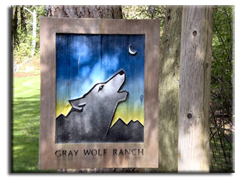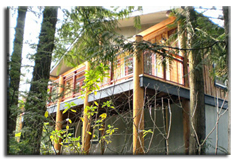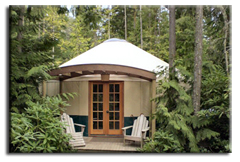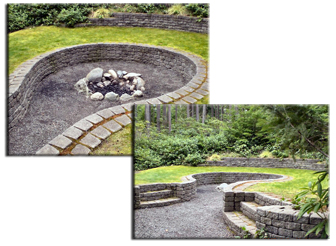| From Strugglingteens.com Visit Reports Port Townsend, Washington
Gray Wolf Ranch is a program for boys ages 15 to 25 whose primary diagnosis is Chemical Dependency and who have successfully completed a primary Chemical Dependency Rehab program. The optimum size of the program is 28 boys. The purpose of The Ranch is to be a follow-up and completion of that initial CD Rehab program. Staff members describe the program as being somewhere between a half way house and a psychiatric care provider. The program is clinically driven, and they use the term "Alcoholics Anonymous (AA) informed." The purpose of the Ranch is to complete the CD treatment that had been started by the initial program. Some of the programs the staff mentioned that have most frequently referred their graduates to Gray Wolf Ranch are Hazeldon, Caron and Wilderness Treatment Center.
The first impression upon entering the property is one of natural tranquility. There are twenty acres covered with natural growth, but it is maintained very well and seems more like a garden than wild and brushy acreage. The balance between nature and control contributes to the peacefulness of the setting. Buildings and offices are sprinkled around the property in a natural wood style that fits into the surrounding natural growth. Each building is connected by well groomed paths with adequate lighting at night that appears to be effective but unobtrusive
I had a chance to meet several of the students as I toured the campus, and all seemed to feel safe and comfortable with good eye contact. Many were heading to or returning from jobs, volunteer work or the study center. I also met some students putting in a shift in the student run tee-shirt silk screening and embroidering business in downtown Port Townsend called Badd Habits. After hiring a professional manager, this business has been quite successful in attracting clients from all over the country and is now running in the black. The students who were working a shift while I was there seemed enthused about their work and seemed to be learning some good work skills. Right next to Badd Habits is the Ranch's Learning Center. The room is filled with computers, and the students continue their academics there with the help of a certified teacher acting as a proctor/mentor. The students continue their education there either by working with their home district, or by using NovaNet, which provides online accredited High School courses. The older students either take college classes through a local college branch, or have jobs, or both. The first week a boy spends on campus is a type of orientation with the clinical process starting immediately. This includes the student helping refresh his own social history and master plan which he then signs off on. After the first week, the student becomes part of a peer group. He then is involved with the routine of the group which consists of evening group, initially five AA meetings a week, and weekend outdoor challenges which are sometimes overnight. The wilderness experience is seen as a very important part of the experiential approach to the healing process, so every six weeks each of the three groups goes on an expedition of six days or longer. These can consist of kayaking around the San Juan Islands, or expeditions into the Cascade mountains, or trips on the Washington Coast. These expeditions go out in all seasons and the students are fully outfitted appropriately for the season. In addition to the challenges of exploring nature during these expeditions, daily groups continue and the wilderness experience is integrated into the clinical master plan for each student. The pictures on the wall of the outfitting room show the students in a wide variety of climates including camping in sub-freezing temperatures, high on a mountain trail, hiking along the Washington coast and in a cove in the San Juans.
The structure is unobtrusive but fairly tight with the students being kept active almost all of the time. As one example of the structure they have evolved, the firewood for their fire pit is always in a locked shed. As an explanation, the staff explained that on one of the many paths crossing the property, they have a circle around an impressive fire pit which is used for house meetings from time to time. However, some time back one student, probably reacting out of his addictive tendencies, decided he was going to try to build the world's largest bon fire. Fortunately, the fire never got out of the pit and none of the property was ever in danger, but to avoid wasting wood like that in the future, it was decided to lock the fire wood in the shed which became part of the structure creating a boundary for the students' safety. This kind of subtle but controlled structure is seen as vital in helping the students learn to manage their recovery and how to create their own boundaries in the future. Most of their graduates continue on to boarding school, usually a therapeutic boarding school. Having the skills from Gray Wolf Ranch in managing their recovery, they still need time to learn about the rest of life in their process of growing into a mature adult. © Copyright 2012 by Woodbury Reports, Inc. |



